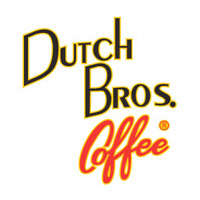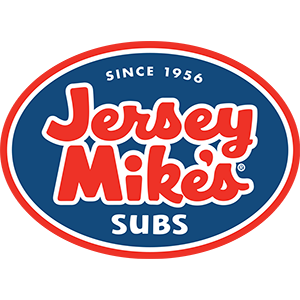Heating And Cooling Efficiently
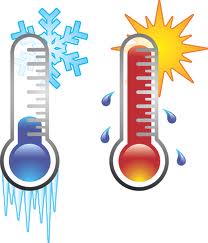 As much as half of the energy in homes and commercial environments goes to heating and cooling the structure. When perishable items or food items requiring to be held at temperature are involved then the heating and cooling costs go up even more. So making smart decisions on your heating and cooling equipment is vital to keep overhead down. Take these steps to maintain your heating and cooling equipment in proper working order and prevent unnecessary costs.
As much as half of the energy in homes and commercial environments goes to heating and cooling the structure. When perishable items or food items requiring to be held at temperature are involved then the heating and cooling costs go up even more. So making smart decisions on your heating and cooling equipment is vital to keep overhead down. Take these steps to maintain your heating and cooling equipment in proper working order and prevent unnecessary costs.
Change Filters In Heating and Cooling Equipment Regularly
Check filters in heating and cooling equipment monthly. It’s especially vital to check filters in your heating and cooling equipment during heavy use months when they can cost you the most money. Dirty filters can slow down the air flow in the heating and cooling equipment and make it run less efficiently. A clean filter will also prevent the build up of dust or other particulates in the heating and cooling equipment which can lead to costly repairs down the road.
Perform Regular Maintenance On Your Equipment
Just like keeping your car in tip top running condition, heating and cooling equipment requires regular maintenance. Performing regular maintenance will keep your heating and cooling equipment running efficiently and help prevent unscheduled, emergency repairs when you need the equipment to be working the most.
Install Programmable Thermostats In Your Heating And Cooling Equipment
Rather than manually setting the thermostat as needed, a programmable thermostat will allow you to schedule the settings on your heating and cooling equipment. This will prevent overheating and under heating when you are away from the equipment. While a programmable thermostat may cost more on the front end, it will provide you long terms savings for operating your heating and cooling equipment.
Seal The Ducts On Your Heating And Cooling Equipment
Ducting that moves air between your heating and cooling equipment can be huge energy wasters if they have leaks. By sealing and insulating your ducts, you can save as much as 20% on your energy costs. First seal the ducts for your heating and cooling equipment and then insulate the ducting .
Ask A Professional To Provide You An Energy Audit
Replacing hold heating and cooling equipment may seem expensive on the front end, but if it is not running efficiently due to wear and tear the smart move might be to spend money on replacing it. A heating and cooling professional will be able to tell you where you’re losing money and how to improve your system. While fixing existing heating and cooling equipment might be possible you might be better off in the long run with new equipment.

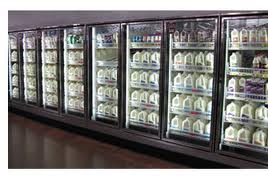 Often times when the weather turns cold we start to think that our commercial refrigeration system is in some sort of “frigid hibernation” and won’t need to be looked at again until the weather turns warm next summer.
Often times when the weather turns cold we start to think that our commercial refrigeration system is in some sort of “frigid hibernation” and won’t need to be looked at again until the weather turns warm next summer. The Stationary Equipment Refrigerant Management Program covers all non-residential, fixed commercial refrigeration equipment and requires the reduction of refrigerant emissions from commercial refrigeration with high global warming potential. In other words, AB-32 limits the use of chlorofluorocarbons, hydrochlorofluorocarbons, perfluorocarbons and hydrofluorocarbons. While these substances were already regulated by the Environmental Protection Agency (EPA) through the US Clean Air Act, the Refrigerant Management Program as it relates to commercial refrigeration expands their control within the state of California.
The Stationary Equipment Refrigerant Management Program covers all non-residential, fixed commercial refrigeration equipment and requires the reduction of refrigerant emissions from commercial refrigeration with high global warming potential. In other words, AB-32 limits the use of chlorofluorocarbons, hydrochlorofluorocarbons, perfluorocarbons and hydrofluorocarbons. While these substances were already regulated by the Environmental Protection Agency (EPA) through the US Clean Air Act, the Refrigerant Management Program as it relates to commercial refrigeration expands their control within the state of California.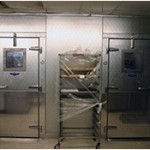 A walk-in commercial refrigeration unit is just what its name implies: a refrigerator big enough to walk into. It can be as small as a closet or as large as a good-size room, but its primary purpose is to provide refrigerated storage for large quantities of food in a central area. Experts recommend that your operation needs a commercial refrigeration walk-in when its cold storage needs exceed 80 cubic feet, or if you serve more than 250 meals per day. Once again, you’ll need to determine how much you need to store, what sizes of containers the commercial refrigeration storage space must accommodate, and the maximum quantity of goods you’ll want to have on hand at any time.
A walk-in commercial refrigeration unit is just what its name implies: a refrigerator big enough to walk into. It can be as small as a closet or as large as a good-size room, but its primary purpose is to provide refrigerated storage for large quantities of food in a central area. Experts recommend that your operation needs a commercial refrigeration walk-in when its cold storage needs exceed 80 cubic feet, or if you serve more than 250 meals per day. Once again, you’ll need to determine how much you need to store, what sizes of containers the commercial refrigeration storage space must accommodate, and the maximum quantity of goods you’ll want to have on hand at any time. For some food service operations you might also need more than one commercial refrigeration unit if you need to store perishable items at various temperatures. For instance, you’ll need one for produce (41 degrees Fahrenheit), one for meats and fish (33 to 38 degrees Fahrenheit), and one for dairy products (32 to 41 degrees Fahrenheit). If this is your situation, then determining the commercial refrigeration storage you need is a bit more complex, but nothing that can’t be determined with a little planning.
For some food service operations you might also need more than one commercial refrigeration unit if you need to store perishable items at various temperatures. For instance, you’ll need one for produce (41 degrees Fahrenheit), one for meats and fish (33 to 38 degrees Fahrenheit), and one for dairy products (32 to 41 degrees Fahrenheit). If this is your situation, then determining the commercial refrigeration storage you need is a bit more complex, but nothing that can’t be determined with a little planning. Door hinges for your commercial refrigeration walk-in can be rubbed with petroleum jelly to make sure they continue to work well. If these develop a build-up of grease or grime, then their operation will not remain smooth. This means they will begin to stick resulting in your doors not closing automatically and the cold air escaping. Again this will result in lower efficiency for your commercial refrigeration walk-in and higher energy costs.
Door hinges for your commercial refrigeration walk-in can be rubbed with petroleum jelly to make sure they continue to work well. If these develop a build-up of grease or grime, then their operation will not remain smooth. This means they will begin to stick resulting in your doors not closing automatically and the cold air escaping. Again this will result in lower efficiency for your commercial refrigeration walk-in and higher energy costs.

